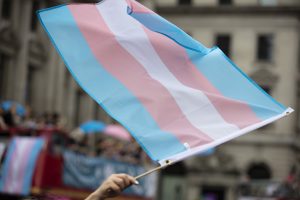Growing up as a trans person in Nepal, I felt confused about how my identity and my country interacted. I kept reading about our amazing reputation for “LGBTI rights” globally, and how in particular on trans rights issues Nepal was a “leader.” But when I tried to change my own name and gender marker on my legal documents, I was met with roadblocks, ignorance, and rejection.
Since 2021 I’ve sued the government 50 times. That’s because the truth is, Nepal’s LGBTIQ+ rights record is much more complicated than initially meets the eye – but we are slowly moving in the right direction.
There have been a few Supreme Court orders on legal gender recognition, beginning with a world-famous one in 2007. The Supreme Court ordered the government to allow people to have their gender identity recognized based on self-realization. At the time, it was quite novel for a government to allow people to self-identify their legal gender. (It has become much more common now, with Argentina breaking ground in 2012, and a number of European countries following afterward).
Subsequent cases in Nepal reinforced the 2007 ruling, but government officials limited changes to people who identified as a “third gender” despite the Supreme Court’s broader ruling on gender identity.
It was largely assumed that “transgenders are third genders.” There was no understanding or acknowledgement of the fact that a trans woman may identify as a woman and a trans man as a man. Not everyone who does not fit into the cis-normative definitions of “man” and “woman” identified themselves as “third gender.” Moreover, even for folks who identified outside the spectrum of gender binary, not everyone agreed or preferred the term “third gender.” Moreover, the term “third gender” and “transgender” were interchangeably used.
So my peers and I began working on lexicons and semantics. We started talking about words and their etymology and formation. We started writing books and creating resources about sexual orientation, gender identity, and sex characteristics, beginning from Nepala Bhasa (which is my native tongue) and Khas Bhasa (which is commonly known as “Nepali,” and unfortunately the sole official language of Nepal).
Previously the term “tesrolingi” (which literally means “third gender”) was used in Khas Bhasa to refer transgender folks, which built a narrative that “transgenders are third gender.” We introduced the term “paralaingik,” a word more like “transgender.” Before paralaingik, when we wrote “trans men are men” it would be written in Nepali as “third gender men are men,” which was confusing. The term paralaingik linguistically enabled us to advocate for legal gender recognition of trans men and trans women.
Using this new language, I began filing lawsuits in 2021 – not only because the Nepali courts have upheld progressive jurisprudence on LGBTIQ+ rights, but also because other organs of the state, such as the Parliament and the government, have shown their unwillingness to address this issue. In fact, almost all of the legal progress on LGBTIQ+ rights in Nepal has been possible solely through our courts. A paper filed at the court results in a form of outcome, but numerous papers filed in respective government offices often get piled among a stack of others without any outcome.
My lawsuits have borne fruit. Recently, the Supreme Court issued a writ of mandamus for the petition I filed in 2021, demanding to be recognized as a woman. (The full text of the judgment is yet to be released). As a law student and human rights advocate, I have been traveling to several High Courts across Nepal to file cases on behalf of other trans people. All of the cases that have reached a verdict thus far have had a positive outcome, contributing to strengthening transgender jurisprudence in Nepal.
Nevertheless, these court filings also highlight how each individual must seek a judicial remedy if they wish to change their name and gender marker.
What we need is a central directive and protocol that clarifies to all government systems how our identities are to be recognized on our legal documents – solely on the basis of our self-declaration and not, as a new Human Rights Watch report calls it, under a regime of “creeping medicalization.” These days, even though there is no law telling them to do so, government officials are demanding medical proof that a trans person has undergone surgeries before they will recognize our gender identities. This is far from the “self-feeling” standard set by the Supreme Court, and it’s insulting to our dignity.
What my genitals look like is a fact about my life that is nobody’s business but my own. The government can’t oblige me to get surgery in order to legally correct my documents.
If Nepal wants to continue to get recognized for its “beacon of hope” status for LGBTIQ+ rights, the government needs to create policy that enables Nepali citizens to change their name and gender marker on their documents.

































